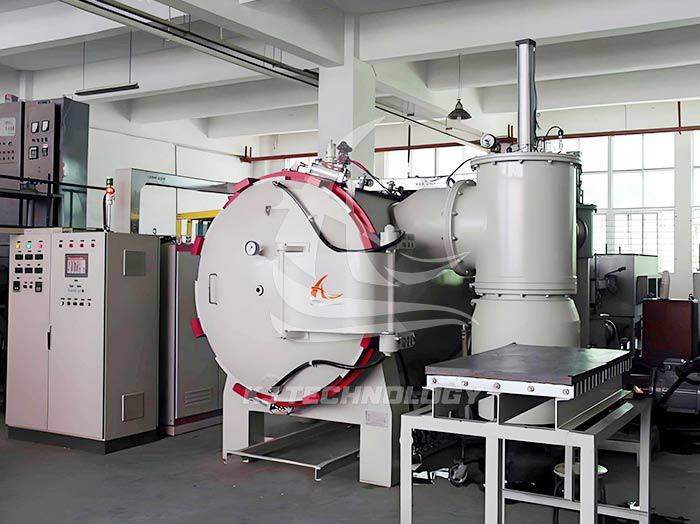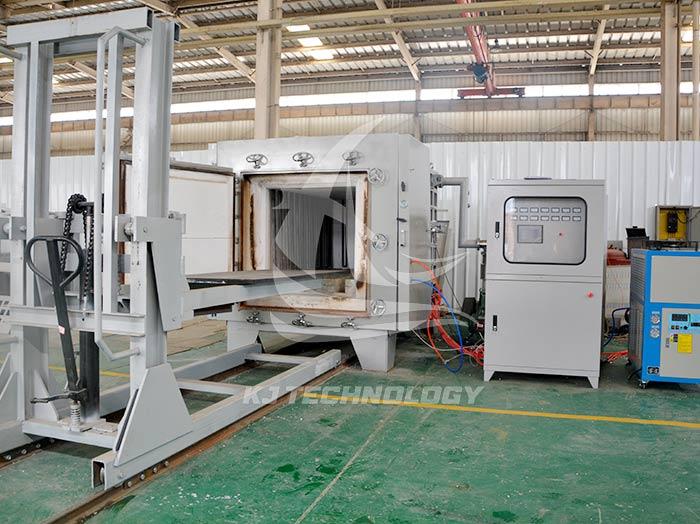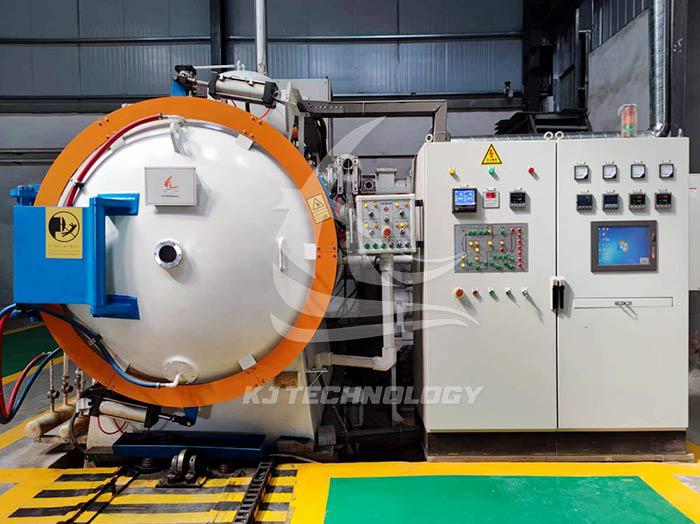Advantages of vertical vacuum hot pressing furnace
 09-18-2025 Author: KJ technology
09-18-2025 Author: KJ technology
The vertical vacuum hot press furnace combines the characteristics of vacuum environment, pressurized heating, and vertical structural design, demonstrating significant advantages in the field of material preparation. The following is a detailed summary of its core advantages:
1. Preparation of high-density and low porosity materials
Principle: Remove gases and volatile impurities from the material through a vacuum environment, while applying pressure to promote particle bonding and eliminate pores.
Advantage:
Significantly increase material density (close to theoretical density) and reduce internal defects.
Enhance the mechanical properties (such as hardness, strength, wear resistance) and physical properties (such as thermal conductivity, electrical conductivity) of materials.
Application cases: Hard alloy cutting tools, ceramic bearings, metal matrix composite materials and other products that require high density.
2. Prevent material oxidation and pollution
Principle: Vacuum environment (or filled with protective gas) isolates oxygen to prevent material oxidation or reaction with external impurities at high temperatures.
Advantage:
Maintain the purity of material chemical composition and reduce the introduction of impurities.
Suitable for materials sensitive to oxidation, such as titanium alloys, ceramics, and certain metal powders.
Application cases: Aircraft engine turbine blades, semiconductor packaging materials, high-purity ceramic components.
3. Uniform temperature and pressure distribution
Advantages of vertical structure:
Under the action of gravity, pressure is evenly transmitted to the surface of the material, reducing local stress concentration.
The temperature field is more uniform to avoid uneven heat convection caused by gravity.
Advantage:
Improve sintering consistency and reduce the risk of product deformation or cracking.
Suitable for machining large-sized or complex shaped workpieces.
Application cases: Large ceramic substrates, gradient functional materials, and irregular structural components.
4. Accurately control the microstructure of materials
Principle: By adjusting parameters such as vacuum degree, temperature, pressure, and holding time, grain growth, phase transition, and interface bonding can be controlled.
Advantage:
Realize the preparation of special microstructures such as nanocrystals, amorphous structures, and gradient structures.
Optimize material properties (such as superplasticity, magnetism, thermal barrier performance).
Application cases: nanocrystalline soft magnetic materials, amorphous alloy transformer cores, thermal barrier coatings.
5. Efficient energy conservation and environmental protection
Advantages of vacuum environment:
Reduce heat convection and radiation losses, and lower energy consumption.
No need to use protective atmosphere (such as argon), saving gas costs.
Closed system design:
Reduce volatile emissions and comply with environmental requirements.
Application case: Reducing energy consumption and operating costs in large-scale industrial production.
6. Multifunctionality and process flexibility
Scalable features:
Combining hot isostatic pressing (HIP) technology to achieve densification at higher pressures.
Integrated rapid cooling system, controlling cooling rate to optimize material properties.
Process compatibility:
Suitable for various processes such as sintering, annealing, heat treatment, diffusion bonding, etc.
Application cases: Ceramic metal composite material connection, high-temperature alloy heat treatment.
7. High automation and intelligent control
Characteristics of modern vertical vacuum hot pressing furnace:
Equipped with PLC or industrial computer control system to achieve precise closed-loop control of temperature, pressure, and vacuum degree.
Support the storage and retrieval of process parameters to improve production repeatability and efficiency.
Advantage:
Reduce human operational errors and improve product quality stability.
Easy to integrate with production lines and achieve intelligent manufacturing.
Application case: Mass production of high-precision electronic ceramic components and powder metallurgy gears.
8. Extend equipment lifespan and reduce maintenance costs
Vacuum environment protection:
Reduce oxidation and corrosion of heating elements and furnace walls, and extend their service life.
Modular design:
Key components such as heating elements and seals are easy to replace, reducing maintenance difficulty.
Application case: Long term stable operation in high demand fields such as aerospace and new energy.








